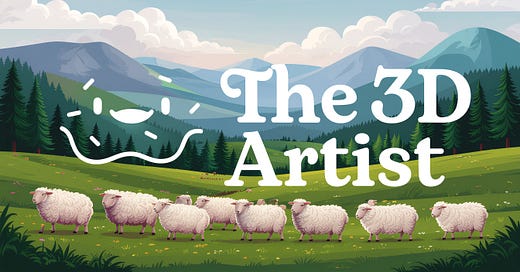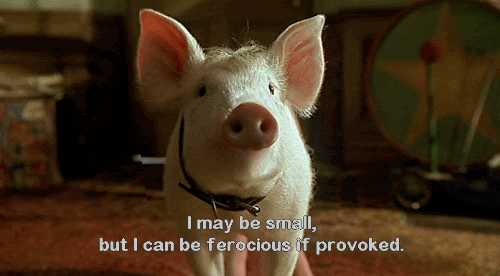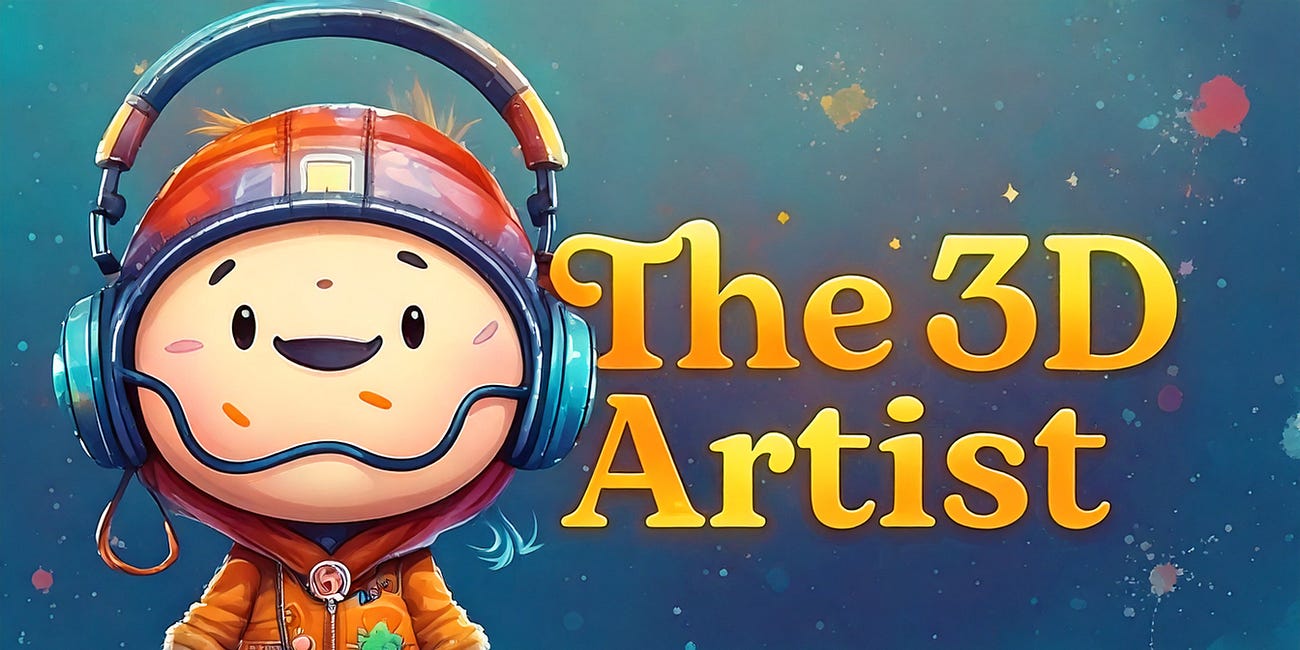When I talk about working as a 3D artist outside of entertainment, I always get asked the same questions:
What job should I apply for?
What roles are out there?
What skills do I need to learn?
It’s a fair question, especially for those of us who grew up in an era of well-defined pipelines. Whether it was VFX, games, or feature animation, there was a time when getting a job meant fitting yourself into a clearly defined production role, like being the final piece of an almost completed puzzle. You’d mold yourself to a job title (Shading Artist, Lighting Artist, Environment Artist, Rigging Artist, Pipeline TD, etc.) and that was your lane.
But those days are over.
The old linear pipelines are struggling to keep up, not just outside of entertainment but even within entertainment. They’re slow, bloated, and built for a time when studios could burn $150 million over four years because they were confident they could rack up a billion dollars at the box office and in toy sales.
That’s not the reality anymore.
The New Role: Digital Shepherd
For a while, I struggled to describe what looking for a job in this new era meant. I knew it wasn’t about waiting for the proper role to open up. It was more about forging your own path. But I didn’t have the right words for it.
Then Mack Garrison from Dash Studios used the term Digital Shepherd on the School of Motion Podcast, and it stopped me in my tracks. (To be fair, I was on a run at the time and will stop for just about anything—a gust of wind, a leaf blowing too close—but this time, it was for a good reason.) That’s the term. That’s the role we should be aiming for.
Now is not the time to passively wait for a company to open the perfect role for your skillset.
You need to lead.
Be a Digital Shepherd.
A Digital Shepherd guides companies forward, helping them understand, build, and scale a 3D pipeline that fits their business needs. It’s not about being a puzzle piece.
It’s about inventing the puzzle.
This mindset shift is especially critical outside of entertainment, where companies don’t have an established pipeline to plug into. They may know they need 3D content to produce content faster and take advantage of AI workflows, but they don’t know where to start.
They need someone to help navigate a rapidly evolving landscape of tools, formats, and workflows.
Why Companies Need You
Right now, we’re at an inflection point. Companies across every sector (fashion, architecture, product design, manufacturing) know they need to adopt 3D, but they’re overwhelmed.
There’s more 3D software, AI tools, asset managers, and file types than ever before. Even with two decades in this industry, I find it overwhelming. So imagine what it’s like for a small-to-midsize brand trying to modernize their visual pipeline. Where do you even begin? The Blender donut tutorial isn’t going to cut it.
And the biggest constraint of all?
These businesses are just trying to stay afloat. They’re too busy keeping the lights on to pause operations, explore every new tool, or experiment with full workflow overhauls. They don’t have time for trial and error. They need solutions that work—and they need them now.
So they turn to software companies, who are happy to give demos and pitch solutions, but none are a one-size-fits-all solution. 3D workflows always require multiple tools, and no single vendor will architect an entire, integrated pipeline for a client. They simply don’t have the resources for that level of handholding.
Software companies are just trying to keep the lights on too. So they need to sell you their wares and move on just like everybody else.
So who will?
You will.
The Gap No One Is Filling
There aren’t many consultancies out there focused on 3D transformation. Deloitte and McKinsey might eventually step in, but it’s small potatoes for them and it’s not their bread and butter. While a few smaller firms are emerging, there’s still a massive gap.
That gap is where you come in.
If I lost my job tomorrow, this is exactly what I’d do: I’d position myself as a Digital Shepherd. Someone who can help businesses stitch together the right combination of tools, workflows, and creative strategy to meet their goals—without the baggage of a bloated entertainment-style pipeline.
And if you’re wondering, “Why share this if it’s such a good idea?”—it’s because the idea alone isn’t worth much.
The Value Is in the Execution
This isn’t a new idea. You won’t be the first to think of it. The value lies in doing it.
Actually doing it.
No tutorial will walk you through it.
No certificate or checklist will prepare you for this work.
You need grit. You need curiosity. You need problem-solving skills and a willingness to experiment, learn new tools, and connect the dots in creative ways.
Start by building small personal projects demonstrating your ability to create efficient workflows. Share your work. Show how you connect tools. Talk about how you’d solve problems for a real business. Then position yourself as someone who can help companies go from “we need 3D” to “here’s our new pipeline.”
That’s what companies need. And they need it soon.
Final Thought
I wish I could give you the one list of skills to master, like we could five years ago. But that’s not the world we live in anymore.
If you want to stay competitive as a 3D artist in today’s job market, you have to be part creative, part technical, part strategist—and 100% proactive. The next era of 3D content creation will be shaped by those who step up to lead.
Be one of them.
The 3D Artist Community Updates
Alex Gabrielli is joining us for an AMA this week!!!!
Alex is a filmmaker, 3D artist, and VFX supervisor whose work blends cinematic storytelling with cutting-edge digital craftsmanship. He holds an MFA in Film Production from the USC School of Cinematic Arts, where he honed his skills in directing, visual effects, and production design.
Through his creative studio, MΘNSTRΘ Labs, Alex explores the intersection of narrative and technology—bringing emotionally resonant, visually ambitious worlds to life. His portfolio spans commercials, music videos, branded content, and short films, often combining practical filmmaking techniques with advanced CG, virtual production, and real-time workflows.
With a background in both traditional cinema and digital art, Alex is known for building immersive, stylized environments that serve story first. His work often gravitates toward surreal, genre-infused concepts, using VFX not just as spectacle, but as an extension of character and emotion.
As a VFX supervisor and 3D artist, Alex thrives in collaborative environments, translating complex visual ideas into seamless on-screen moments. Whether leading a team on set or behind a workstation sculpting digital worlds, his approach is rooted in thoughtful design, precise execution, and a passion for innovation.
From concept to final render, Alex Gabrielli continues to push creative boundaries—helping brands, musicians, and storytellers tap into the full potential of visual storytelling in the digital age.
3D Merch is here and we have a new hoodie!
3D News of the Week
OkTopo Blender Add-on - YouTube
JangaFX Provides Free 6-Month Access To Its Tools For Laid-Off Professionals - 80.lv
Report: Half Of Hollywood’s Top 10 Most Profitable Films Last Year Were Animated - Cartoon Brew
Samsung steps up AR race with advanced microdisplay for smart glasses - KED Global
Star Wars Changed Visual Effects — AI Is Doing It Again - TED
3D Tutorial
3D Job Spreadsheet
Link to Google Doc With A TON of Jobs in Animation (not operated by me)
Hello! Michael Tanzillo here. I am the Head of Technical Artists with the Substance 3D Growth team at Adobe. Previously, I was a Senior Artist on animated films at Blue Sky Studios/Disney with credits including three Ice Age movies, two Rios, Peanuts, Ferdinand, Spies in Disguise, and Epic.
In addition to his work as an artist, I am the Co-Author of the book Lighting for Animation: The Visual Art of Storytelling and the Co-Founder of The Academy of Animated Art, an online school that has helped hundreds of artists around the world begin careers in Animation, Visual Effects, and Digital Imaging. I also created The 3D Artist Community on Skool and this newsletter.
www.michaeltanzillo.com
Free 3D Tutorials on the Michael Tanzillo YouTube Channel
Thanks for reading The 3D Artist! Subscribe for free to receive new posts and support my work. All views and opinions are my own!














Great article!!!! Some companies are calling it a "Digital Imaging Specialist", but the problem with that title is, when searched on LinkedIn, the results are mostly xray technician folks. :-/